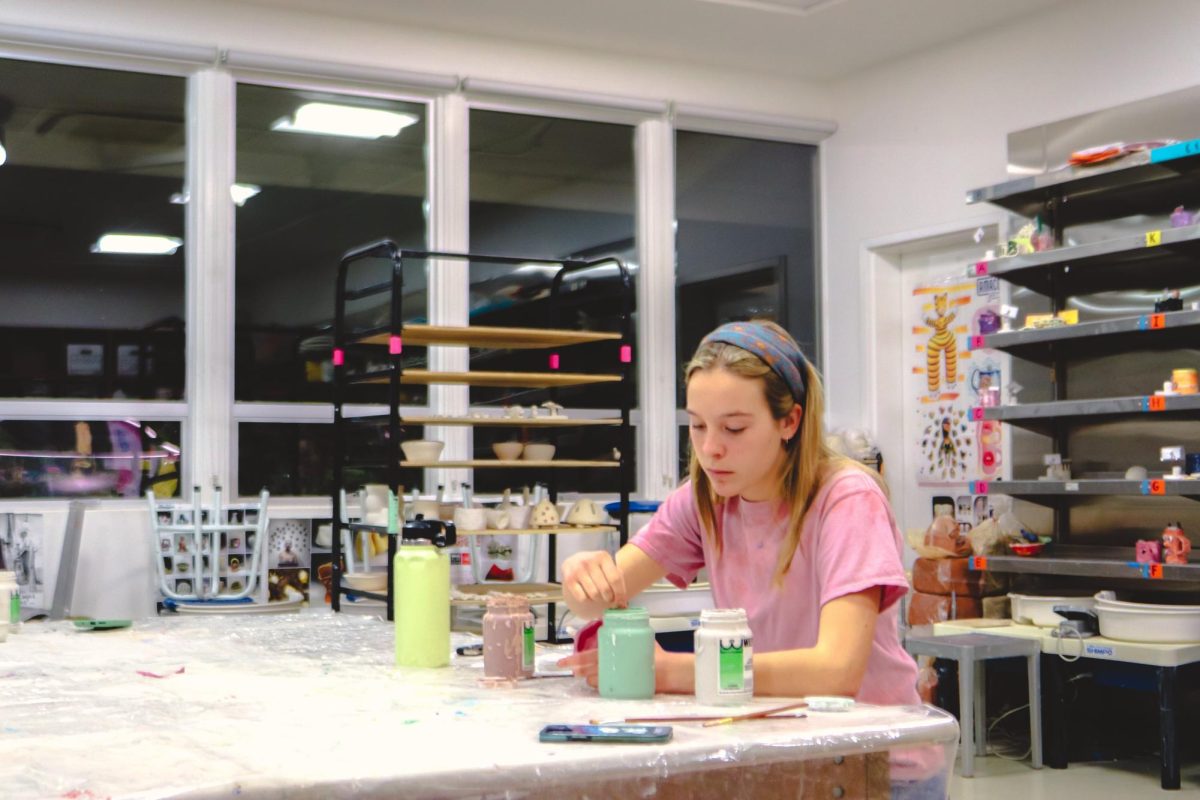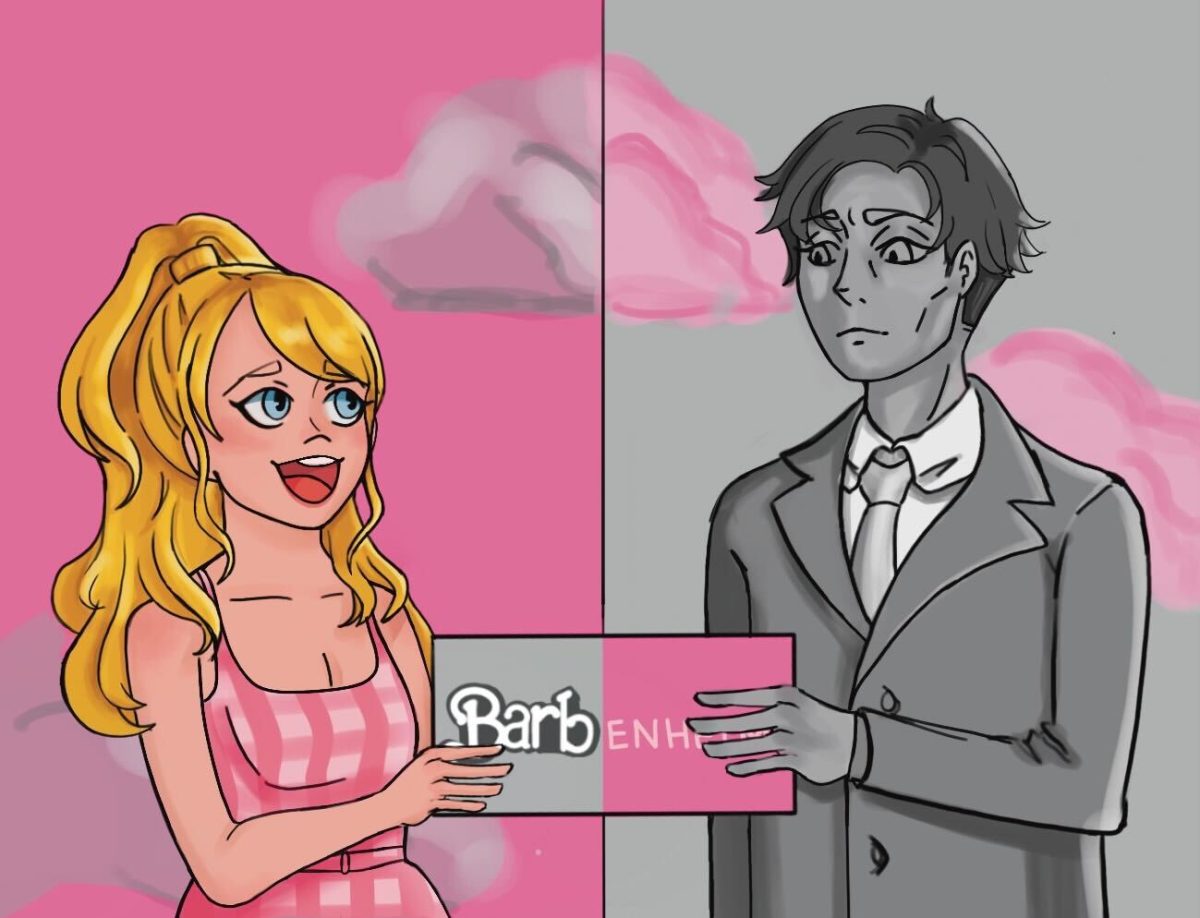Senior Cameron Akioka takes a seat at the piano, eyes closed and fingers poised over the sea of black and white keys as she prepares to play Haydn Sonata No. 50 in C major, a piece she has been practicing for months. Akioka sharply inhales, then commences with a descending broken C major chord. In her mind, the piece evokes undertones of white, whereas another piece in F minor would produce a dark purple color. Akioka has chromesthesia, a type of synesthesia in which an individual associates color with sound.
Synesthesia is a rare sensation in which the stimulation of one sense automatically triggers sensation in another.
“One theory is that the wiring between the different senses within the brain, instead of it getting pruned away so that those senses stay localized in their various regions, they get cross-wired so that stimulation of one particular sense also causes a stimulation in another sense,” said Advanced Placement (AP) Psychology teacher Christopher Farina.
An individual with synesthesia can simultaneously perceive a unique blend of senses, such as music and color, in Akioka’s case.
“Oftentimes, [synesthetes] will hear certain things, but they’ll also see things in correspondence with them,” Farina said. “A really common thing is that they’ll hear a number and perceive it in a certain color — it always triggers some kind of visual element.”
According to Farina, studies have found a greater degree of synesthesia-like characteristics in younger than older individuals, which may be due to the synaptic pruning in the brain throughout an individual’s maturation and development.
However, the auditory-visual synesthetic interaction — similar to Akioka’s experience with music — tends to endure for a longer period of time. Akioka only perceives color when she hears classical music; this sensation is heightened when she plays the piano, especially through distinguishable keys and harmonies.
“I don’t really see a color in front of me, like it doesn’t make my field of vision red,” Akioka said. “It’s more of a feeling — I just associate those colors with keys. I’ve had this experience ever since I started playing piano.”
Akioka believes that certain chords are aligned with a specific color due to their underlying, symbolic meanings.
“To me, C Major has always been white — no matter what register the piece may be in, it’s a key of purity and innocence,” Akioka said. “Also, B-flat major is gold, a royal and majestic key, and A major is red, a passionate key.”
Compared to Akioka, John, who requested that his real name not be used, said he perceives color in all sounds. On a daily basis, John’s chromesthesia enables him to associate strong colors with individual voices and identify which family member is walking in his hallway based on the color of their footsteps.
“As long as I can remember, I’ve always experienced sound and music with color,” John said. “I didn’t realize that it was unusual around sixth or seventh grade — I’d describe a sound or chord as ‘bluer’ or ‘darker’ or ‘ruddy brown’ and get weird looks from my friends. Just as obvious as an apple is red, E major is a sort of faded Prussian blue or denim color.”
John plays a myriad of instruments—electric guitar, piano, ukulele, drums and erhu, to name a few — each offering a unique sensory experience.
“[Different instruments] very rarely affect the actual color of a note or chord, but they do change the shade or tint,” John said. “A saxophone’s notes are slightly richer and darker than a piano, for example.”
After hearing a piece or song for the first time, John can emulate the instrumentals of the song with the piano or guitar without having to listen to it again, even adding in percussion with an electronic drum pad.
“I can ‘see’ every instrument and note and chord, and it’s a blissful experience to just lose myself in the sound and color,” John said. “[Chromesthesia] also helps when I’m learning or composing a piece of music, because when I hear a color in my head or on a recording, I know what to play.”
Akioka claims that her chromesthesia doesn’t impede with her day-to-day life and instead embraces her sensory experience.
“As someone who has been playing piano for over ten years, however, I feel like [my chromesthesia] has become more prominent over time,” Akioka said. “I’ve grown to find out that the beauty in classical music isn’t just through the sound, but also through imagery and portrayal of emotion.”












